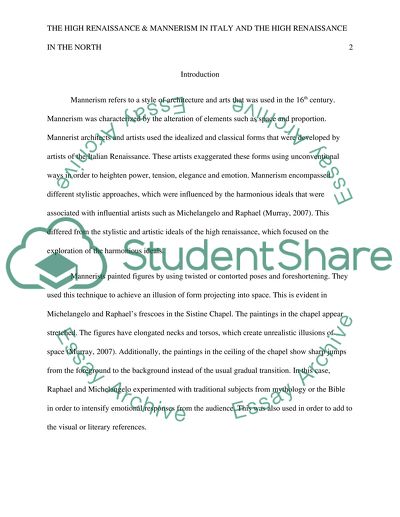Retrieved from https://studentshare.org/history/1651709-the-high-renaissance-mannerism-in-italy-and-the-high-renaissance-in-the-north
https://studentshare.org/history/1651709-the-high-renaissance-mannerism-in-italy-and-the-high-renaissance-in-the-north.


